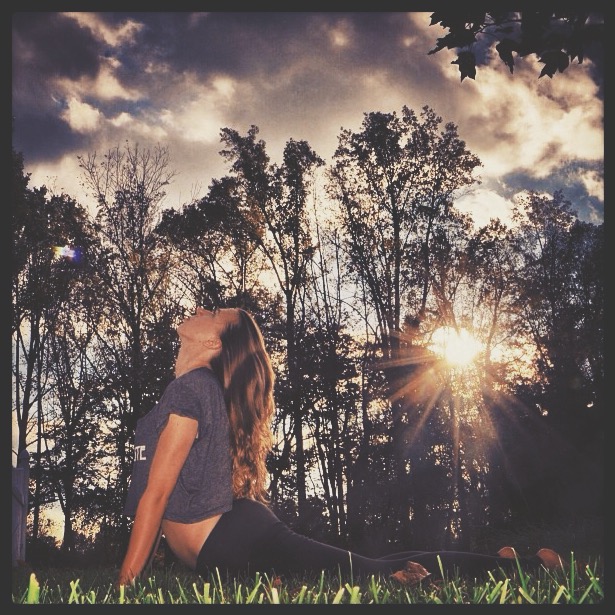The first time I was introduced to the concept of “body image” was at the age of five.
I enjoyed dancing in all kinds of different classes when I was a child. I remember standing in front of the all-mirror wall, in my leotard with a few classmates. The girls started talking about their thighs. They were comparing “thigh gaps” and commenting on how the fat on their thighs was shaking when they danced.
This was the first time I felt that connection: fat was bad and thin was good.
However, I remained resilient to this because dance allowed me to feel the functionality and strength of my body. I appreciated my body and felt connected to it on a deep level. Once I stopped dancing in middle school and started going through puberty, my perception of my figure quickly changed.
My body changed from something I felt connected with to an object. It became something that I realized I could use to gain control and to manipulate.
I became very disconnected from my body and began to resent it. The attention from boys was solely focused on appearance. Popularity and rank became based on how you looked in a crop top and skinny jeans. I began to resent my body because I felt it was the only thing the world was interested in. Between my feelings of disconnection and anger towards my body, I began to start to control it.
I went down a dangerous road of restricting, calorie counting and over exercising.
This road eventually got me a spot at a well-known eating disorder clinic in Philadelphia. I attended therapy there for the remainder of my high school years. My therapeutic work became a long, slow, tedious battle on my way becoming healthy.
It is remarkable how many environmental factors try to keep teenage girls from being healthy and confident. I had two hours of therapy a week,while the rest of my time was filled with Glamour magazine, MTV and peer pressure. Teenage girls are bombarded with an incredible amount of unhealthy stimuli every single day.
Looking back, I have realized just how difficult it is to be a healthy, happy adolescent female.
I had to find a way to protect myself from these images and peer influences in order to feel better about myself. My therapist recommended to try yoga and meditation. While I wasn’t convinced at first, it ended up transforming my body image and possibly my life.
I recalled that when I was little I saw the strength and functionality of my body when I danced, which was the first draw to yoga for me. I felt my body again. I felt its purpose. I remember during one of my first classes, I found harmony between my breath and moving my body into different poses. This connection caused me to feel so incredibly good, it is almost indescribable.
Yoga gives the student the chance to be completely aware of their body.
I had to understand how my body felt in poses and how far I could push it. After practicing yoga for only a couple of weeks, I began to feel my body for what it is again. I’m not saying that my body image was perfect or that I was able to completely negate the media’s influence, but I now had a very strong protective factor. The longer I did yoga, the stronger this shield became.
Yoga created a connection between my mind and body that I had completely lost. Ten years later, I am still a daily practitioner of yoga.
Let‘s take a look what was so earth shattering about this ancient practice for me…
The Breath.
This may sound odd, but learning to breathe was the greatest gift yoga could have given me. It became my shield and my savior. Yoga creates space for us to be still, mindful and just breathe.
Without all the typical teenage distractions, I was able to hear my body again. Learning to listen to my body and realizing when it needed a mindfulness break (and to breathe) was critical in my recovery. When I felt an overflowing of emotions, I would take ten deep breaths. When I felt judged by someone at school, I would take 10 deep, long belly breaths. More times than not, after those breaths, I would feel grounded again.
Yoga has the incredible power to give one’s body a voice. Yoga teaches us to hear what message our body wants to tell us, be mindful and answer its call.
This also led me to discover intuitive eating, which is a technique where your eating is based on what messages your body is giving you. You eat when you’re hungry, and you stop when you’re full. I practice the breath before everything I do now, it has nearly become instinctual. I begin my day with three deep breaths, stating my intention for the day, and I end my day with the same three deep breaths for what I am grateful for.
I had a yoga teacher pass along a quote from one of her mentors stating, “If we all just knew how to breathe, the world wouldn’t need yoga.”
Take time to breathe—and listen to the truth your body is trying to tell you.
Author: Brooke Harrison
Image: Authors own.
Apprentice Editor: Robert Busch; Editor: Yoli Ramazzina












Read 0 comments and reply